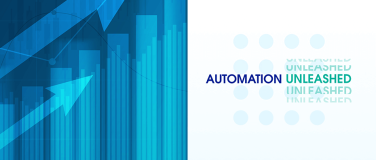The Jetsons inspired robot obsessions for many of us. It was Rosey, the head of the household, that created the vision of automated help. Today, Roomba, Rosey’s grandson, helps with vacuuming our homes. Automation is critical in our daily lives. The dictionary says automation means “the use of machines and computers to do work that was previously done by people,” but we know the true meaning of automation is much deeper than that.
How to get started with automation
Since 2000, we have worked hard to digitize our documents and processes. This has led to a large proliferation of software and applications. Data seems to be stored everywhere, yet found nowhere. Systems don’t know how to talk with each other. Integration has become a critical prerequisite to automation.
1. Create entry points for automation
So how do you get started automating your work? Develop an approach to identify the entry points for automation:
- Clarify the problem being solved. Gain a grounded understanding of the drivers. Describe current business operations and systems to identify automation candidates.
- Understand the interaction between the human and the task. Apply good practices to first optimize, second integrate and third automate key business processes.
- Deliver minimum viable automations (MVAs). Make small automation changes and expand on them as you learn how they fit into the overall process.
A great place to get started with automation is to apply it to a manual, repetitive process that is conducted consistently over time. Create an automation that mimics the activity of a human being in carrying out a task within a process. Robots can do repetitive stuff more quickly, accurately, and tirelessly than humans, freeing them to do other tasks requiring human strengths such as emotional intelligence, reasoning, judgment, and interaction with the customer.
Robots deal better with simpler, repetitive tasks. According to Gartner, the global robotic process automation segment alone saw revenue growth of 31% in 2021, reaching a total value of $2.4 billion and almost twice the growth rate of the overall software market (16%). Furthermore, experts predict that the market shows no signs of slowing down and will continue to grow to an estimated $20.1 billion in 2030.
2. Consider governance
As you automate, remember human oversight is still required for these simpler tasks. One example is the case of so-called “robo-signers” used in the mortgage industry. These systems rubber-stamped foreclosure documents on homeowners automatically, even when a foreclosure was questionable or avoidable.
Moreover, this practice failed to meet government regulations for oversight of the foreclosure process in the mid-2010s, leading to a scandal following the housing market bubble of the 2008-09 financial crisis. Following the public exposure of robo-signers, foreclosure documents had to be manually reexamined, and the companies involved faced disciplinary action. Governance is an important consideration in automating any human process.
3. Put the human front and center
Aim to better understand the end user and their operational environment. Use cases, data models, and quality factors allow you to visualize the human-computer interactions from an end-user perspective and initiate a discussion on how technology and process improvements.
Build for the future. Automation sets the technology foundations and process governance and composable building blocks in your organization. Expect that more automation will be done using earlier investments.
Manage automations as part of your application portfolio. Automations are add-ons to your application portfolio. Unmanaged automations, like applications, will sprawl and reduce in value over time. A collaborative rationalization practice pinpoints where automation is required and identifies which business inefficiencies should be automated next.
Those who can, automate
Consider automating repetitive, time consuming tasks to allow you and your business to spend time where it really matters. As Jevons paradox has shown, improving efficiency of a resource actually leads to an increased rate of consumption of said resource through increased demand.
Allow the robots to do the manual work in a more efficient and scalable manner while you focus on what truly matters long-term. Ready to get started? Learn how to build an automation program that delivers tangible business value for your organization as a great jumping-off point.









